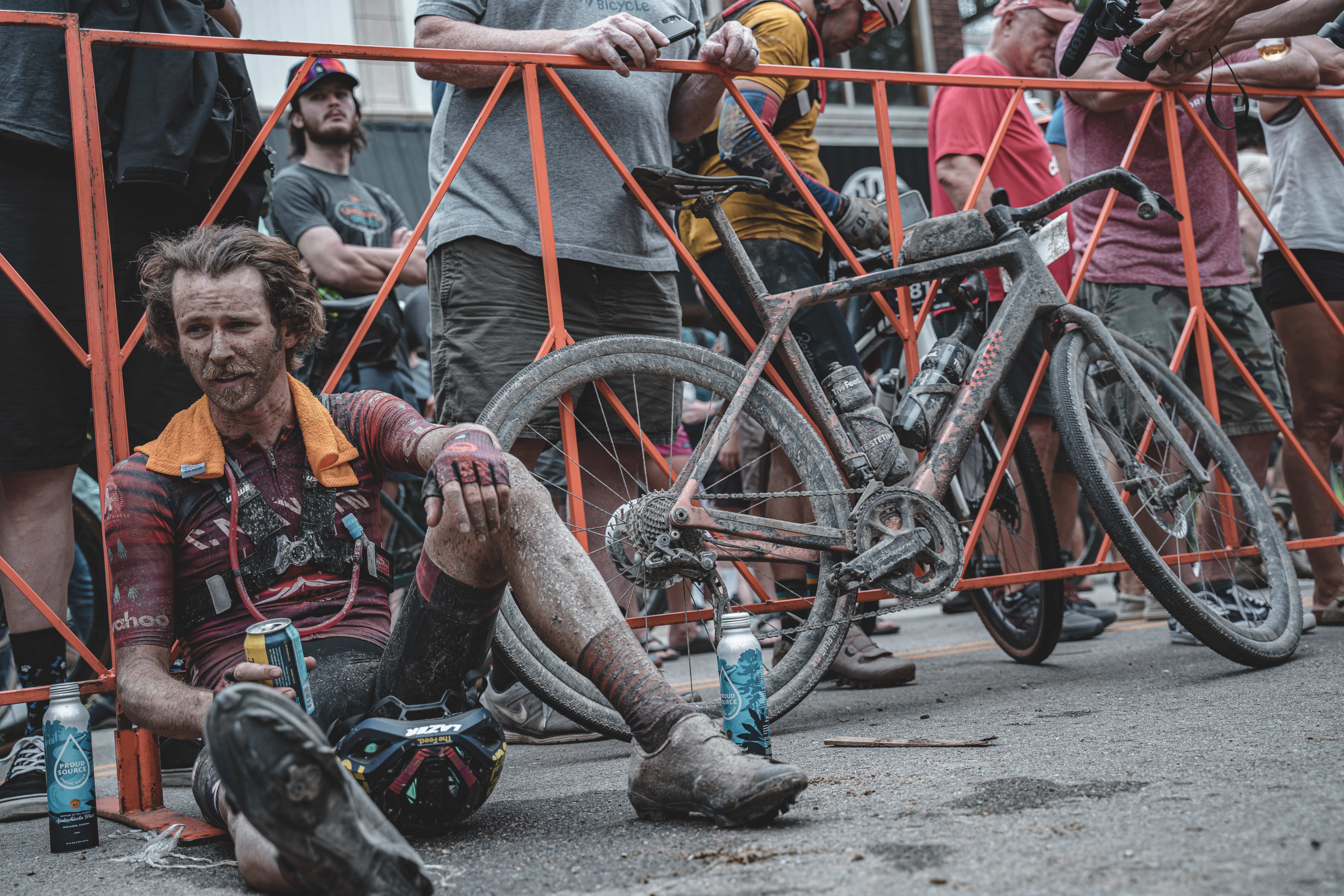
Pete joins The Feed to share some insight into his recent 2nd place at the 2023 LTGP Crusher in the Tushar event, fueling modifications, and his preparation for the Leadville 100. Dive into this brief interview to learn more!
Q: The third stop of the LTGP. Walk me through your weekend a bit and what those races mean to you.
Crusher is actually one of the most relaxed races in the Grand Prix. It's just the expo, smaller [scene], and the foothills of the Tushar Mountains. So it's a very relaxed vibe, a complete 180 from Unbound a month before. Wayne and I (mechanic) took it like that. We had this amazing camp spot along the river about 10km into the race and it's just it's idyllic, just quiet, no cell service. Then, just knowing the course and having good success there a few years ago, it was a motivating point for me. [With] gravel, you kind of have to do everything these days. As much as I love Unbound, it's still forcing the body to adapt to a different body type and effort than I'm genetically made for. So, it’s nice to get back in the big mountains.
Q: Given the course and demands, what was your strategy during the race? Did you have any specific tactics in mind, or did you adapt your approach during the race?
Yeah, there's always a plan around how to attack it and the fueling [plan] and all of that. It was much more manageable in terms of the logistics of what to carry and how to race it because it was four hours, two big climbs. It feels like a road race-style of format a little. [Tushar] is pretty uncomplicated. It's an hour-ish climb up and then a ripping descent down to a valley, half an hour in a valley, and then an hour and a half climb up to like 10,300 feet. So, high alpine, no oxygen, just climb fast and hold on on the descent.
Keegan's the guy to beat right now so you have to create a lot of your race craft off of how you think he will be doing it.
The Race Report
I finally got my old World Tour climbing legs back and we summited the first climb together, just us. It was quite comfortable –not over the limit– for me and it was just, “Hold on for the downhill” because he is a very good descender. Then, we could get through the valley together and then really let the climbing battle commence on the final ascent. It was all going to plan at the beginning [and] things were working really well over the top of the first climb. I hit this nasty washboard and dropped my chain on the beginning of the descent and had to fully stop, rewrap the chain up, and by the time I got going, he was pretty far out there.
So that was unfortunate; I entered the valley kind of in “no man's land” between him and a chase group that contained [riders] like Lachlan Morton, Matt Beers, Connie Looser. I knew I wasn't going to go faster than Keegan on my own, just in a head-to-head [race], so I elected to wait for the chasers and try to make inroads there. When I linked up with those guys, it was a lot of fun rotating as everyone cooperated. Then, we hit the final climb (the Col d’Crush) and I set off in pursuit and I got [Keagan] back to 90 seconds. But, then the wheels came off a bit and I had gone over my limit and the gap went out – so I ended up second on the day. Which, I’ve got to be honest, that's my true place on the day. It was more a win in that my old legs are back, which has [felt] like a year and a bit.
Q: What is your fueling strategy typically for a race like this and did you deviate given the conditions?
Crusher is one where you really have to optimize weight. It's high altitude and it's hot – like 90ºF and even 75ºF at the highest elevations, which feels like a hundred because it's so high. Dehydration is a real problem. At the same time, if you ride with a hydration pack on your back, you're carrying way too much weight up these hour-long climbs, you're going to be minutes slower. So, it really is this weird balance of weight and optimal nutrition. I prioritized a lot more lightweight fuel. [With it] only being four hours, it was just a case of a lot of gels and that was a mix of Clif, Precision, and Maurten – just keeping it fresh.
Only one of those with caffeine because you have to be careful at altitude, caffeine's a bit of a diuretic so it can dehydrate you more. None of the crazy high-carb stuff because, again, you only have so much water to carry, and if you are creating a high-carb bottle that is super fueling, you don't have the hydration that you would need. So, I opted for a bottle of straight water and a bottle of the Victus During (02) – it’s like a “middle ground”, it's kind of high-carb, but it's still hydrating.
It's a tricky balance to strike and these events kind of make it interesting in that every race demands a different fueling strategy. It could be packs, could be bottles, could be hand-ups, could be aid station stops…so much to coordinate and anticipate.
That's an interesting point with Crusher, there's no aid support. It's only neutral support. They don't want a lot of people on the course because there are no roads to maneuver around the racers. So to keep traffic off the course, it's very much neutral aid only. So, you know, you can rely on someone to give you more water in your bottle, but you can't get your preferred mix. I can't do that race without cramping – it's just so much climbing and so hot. So, the only other special thing I did was have one of the LMNTs. It's not enjoyable, but for anyone out there, if you just have that light little sachet in your pocket and you can get some water, I literally just tear off the tab and throw the powder in my mouth… and it burns. At least the watermelon tastes good, but it burns like hell. You swig some water with that, you wash it down, and that's a pretty solid cramp-buster.
Q: Next up is L100…what’re you looking forward to about the 4th stop of the series? Additionally, how do you manage to stay in a healthy routine during the space between each key LTGP event?
I'm looking forward to Leadville, and SBTGVL even more, because I still excel on the drop bars and the gravel bikes, but Leadville is just a climbing race. I’ve got to start riding my mountain bike more and more for the descending, I [need] to keep up down Powerline and down Columbine. Having found my climbing legs again, it's actually got me a little excited for Leadville for the first time in a few years. In terms of the build between them, I don't have a good answer for anyone out there. The Grand Prix is not the only thing on my schedule, I do a lot of other stuff. There are so many other cool independent races as well. I just came from Downieville this weekend and we're going to do a family road trip out to Colorado, taking our time. So for me, it's pretty simple. It's just going to be high-elevation training trying to get into the thin air as much as possible, get acclimated, and maybe hop in a local event along the way.
The nice thing about the Grand Prix itself though is they're spaced out every month and each race is kind of a different skill set. So you go all in for something like Unbound and then you have one month to turn into a climber at elevation for Crusher. [Now], you have a month to convert the climbing legs to the flat bar for mountain bikes. Then, you’ve got to fully change and convert that to two-hour, XC (cross-country) flatlander power for Chequamegon.
Thanks for sitting down with us, Pete! Best of luck from The Feed at Leadville 100!
